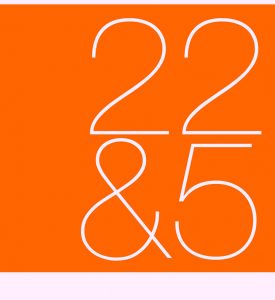
No one knows what technological advances will be waiting for us in twenty year’s time but we do know that the planet has just emerged from one almighty global experiment…and the results are in: After two years of being locked up at home and having our ankles photographed by the Amazon driver every few days, we have learnt to appreciate the true value of our local shops. Turns out they are much more about community than simply getting hold of essentials. Indeed, the local butcher, baker and even the candlestick maker are currently enjoying a much needed renaissance.

It seems we needed reminding that consuming in a vacuum is no replacement for getting out, engaging with the community and feeling alive, relevant and connected. (And if you want more evidence, Google the number of staff Amazon has shed since the tide turned only a few months ago). Two thousand years ago we would wander down to the Forum in our togas to buy bread, check out what’s new and maybe have a glass of wine with a friend. I confidently predict that in two thousand year’s time we’ll be doing something pretty similar. It’s strange how our visions of the future often eclipse our innate understanding of humanity.

So, we should expect to see an army of hungry, young, independent stores, delis, bars, take aways and pop ups on a mission to revive so many of our confused and listless town centres. And best of all, locally sourced product will return to the reborn market square.
Meanwhile, our cities will have followed a very different path. As centres of entertainment, as distinct from ‘shopping’, our major urban centres will become brand playgrounds. Stores will no longer need to ‘store’ things, nor necessarily display products tidily on shelves. Conventional ‘stores’ will be reborn as venues for brands to show off, seduce us and tell us why we should include them in our lives. ‘Stores’ will be replaced by ever-changing, immersive and interactive digital experiences. It will be the age of immersive storytelling. These brand playgrounds will help us determine which products are cool of course, but more importantly, which best align with our personal values. And, of course, they will know all about those since we carry them around on our smartphones. In the same way that our individual preferences shape our social media feeds today, digitally immersive spaces will shape the brand stories around us individually. Imagine how seductive it will be when we become central to a brand’s story. Once upon a time, marketeers talked of demographics, a tool that sketched an approximate picture of loose sections of the population. Egographics will enable AI to target you specifically.

With delivery times getting quicker and quicker, could we see ourselves living in a world of instant delivery by 2042?
It’s worth remembering that this quest for ultra convenience – to the point of instant gratification – was kickstarted in the sixties with the arrival of the supermarket, labour saving gadgets and ready meals. So based on what we already know it seems that delivery times will continue to decrease as we increase the extent of AI into our lives. Predictive algorithms will offer us things we didn’t know we wanted or needed yet, while smart devices will quietly replenish essentials without us having to get involved at all.
However, instant gratification comes with a peculiar paradox: the more accessible something is, the less we value it. Consider how we value music today compared with thirty or forty years ago, now that it’s largely free and on tap absolutely everywhere. Therefore, as our priorities shift towards wanting sustainable products from simple supply chains, ultra convenience will come wrapped pretty heavily in guilt.

Convenience is a relative concept based upon how we value our time being spent across different activities. For example, the arrival of many hundreds of electric vehicle charging hubs across the country will create an exciting new platform for retailers and brands to entertain and sell to us while our cars are being charged. Only retail can magically transform this additional demand upon our time into a convenience. Perhaps we’ll come to see these hubs as the new Forums.

But the technology that’s most likely to satiate our relentless thirst for instant gratification is not a predictive algorithm, or even a swarm of delivery-ready drones hovering overhead. It’s the 3D printer. In simple terms, 3D printing democratises manufacturing, opening up incredible opportunities for independent designers in bedrooms and basements across the world to create products available for us to download anywhere. In 2042 you’ll be able to watch a designer in Seoul create, say, a bike or a guitar to your specification that you can download and assemble. It won’t be instant but it will eradicate distance instantly. And while we’re on the subject, imagine how the eradication of distance, complex supply chains and delivery will revolutionise your local high street. Now that’s an innovation worth waiting for!
Follow me on Twitter @retailfuturist for daily insights and musings.














